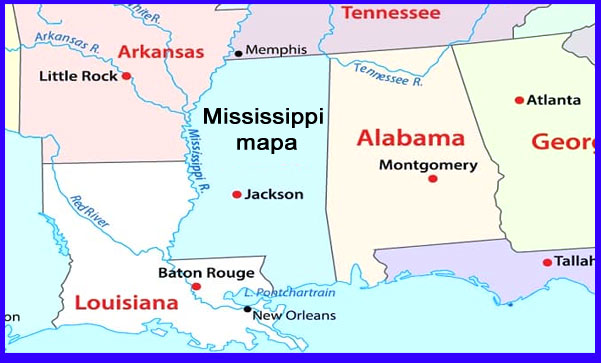Map of Mississippi
Mississippi map has a humid subtropical climate, with hot summers and mild winters(Map of Mississippi — Cities and Roads, ). The state is also home to several natural landmarks, including the Mississippi Delta, which is a fertile region in the northwest part of the state that is known for its blues music and rich cultural heritage(Mississippi, ). Other natural landmarks include the Gulf Islands National Seashore, which features beautiful beaches and wildlife habitats, and the Tombigbee National Forest, which covers over 60,000 acres of land and is popular for hiking, camping, and fishing(Interactive Map of Mississippi’s Parks and Protected Areas, ). Mississippi also has many lakes, streams, and water features, including Grenada Lake and the Mississippi River, which provide recreational opportunities for residents and visitors(Mississippi Rivers, Lakes, Streams and Water Features, ).
Mississippi’s geography is diverse, with two main regions: the Gulf Coastal Plain and the Mississippi Alluvial Plain(Mississippi Maps & Facts, ). The Gulf Coastal Plain is located in the southern part of the state and is characterized by flat terrain and sandy beaches along the Gulf of Mexico. The Mississippi Alluvial Plain, also known as the Delta region, is located in the northwest part of the state and is known for its fertile soil and agricultural production (Mississippi Pictures and Facts, ). The state’s flora consists of forests, grasslands, and salt grass marshes, while its fauna includes deer, turkey, and other wildlife(The Geography of Mississippi — 2008–02, ).
Overall, Mississippi’s geography and natural landmarks make it a unique and beautiful state with plenty to explore and discover.



Comments
Post a Comment